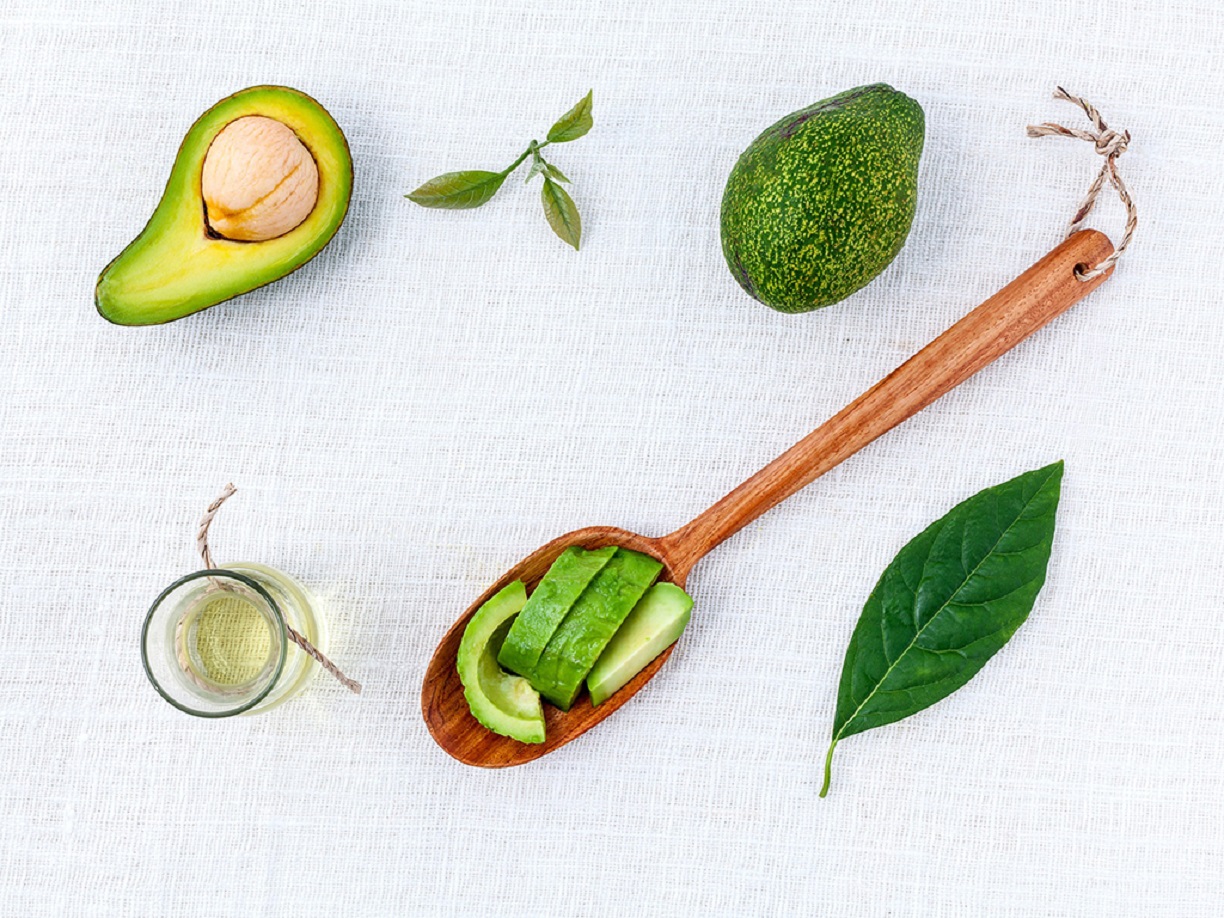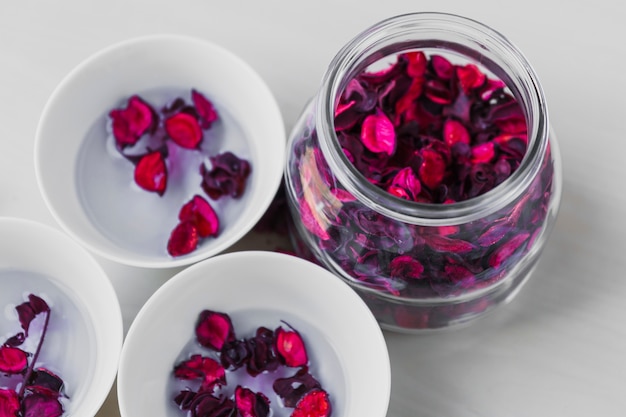Skin
Natural Face Moisturizers for Rosacea: Reviews & Buyers Guide

Tips on Choosing the Right Moisturizer For Your Skin
Advantages of Using a Natural Face Moisturizer
1. These creams can help to reduce wrinkles:
2. Moisturizers are ideal for your skin:
3. The oils protect your skin:
4. The creams shrink enlarged pores:
5. The moisturizers down rashes:
If you are struggling with rosacea, it’s easy to think that you are battling the problem alone. At least more than 16 million people are living with the condition in the United States alone. There are good options when treating the condition.
Moisturizing your skin is a great way to protect your skin when treating rosacea. Some natural face moisturizers offer protection against environmental factors that exacerbate rosacea symptoms.
Before you settle on a moisturizer, read this review carefully, and always talk to your dermatologist.
- Avoid moisturizers that have too many fragrances. You should also avoid harsh cleansers, or any products that contain alcohol as they may contribute to rosacea outbreaks.
- Watch out for rosacea irritants found in different skin care products. They include alcohol, fragrance, Hazel, eucalyptus oil, peppermint and menthol. Other things you want to avoid include exfoliating agents, astringents, and anything else that’s harsh for sensitive skin.
- Test any product on a peripheral area before you apply it on your skin. That will help you avoid any product that you react to and take note of the ingredients. Rosacea irritants vary from one person to another, and your own skin’s reaction should be your guide.
Mistakes to Avoid When Applying Moisturizers
Over-saturating your skin
Rubbing the skin too hard
Not allowing the cream to sink in
Forgetting the area under the eyes
Forgetting the neck area
What you Should Know Before Using Moisturizer for Rosacea
1. Premature wrinkles:
2. Your complexion may be dull and flaky:
3. Your layer of protection may become lost:
4. Your skin may become itchy:
Read the Label
Sensitive skin
honeyskin organics organic moisturizer cream for face and body: Skincare products are characterized to suit different skin types. Common skin types include oily, dry, combination, and sensitive. Rosacea makes your skin dry; that doesn’t necessarily mean you should use moisturizers for people with dry skin. They contain too much oil, emollients, and humectants that can be hard on your skin. The irritant potential outweighs the potential hydrating properties you get. Choose a mild moisturizer formulated for sensitive skin since it moisturizes your skin and is gentle.
These moisturizers are free from harsh ingredients that irritate the skin. You want to avoid anything that can trigger a flare-up. Avoid using moisturizers that have redundant components. The best products alleviate your skin’s dryness. Avoid moisturizers with alcohol, fragrances, and related additives.
Avoid acne treatment products
Regardless of whether your rosacea is accompanied by pimples, it is not advisable to use moisturizers formulated for treating acne. They have ingredients such as benzoyl peroxide and salicylic acid that can dry your skin. Consult a dermatologist for the best way to treat acne while dealing with rosacea.
Calming ingredients
Try using moisturizers that have a calming effect on your skin to reduce the symptoms of rosacea. Chamomile, aloe, and green tea are natural products that have a soothing effect. That will help to lessen the redness and inflammation you could be experiencing.
Sunscreen
Exposure to the sun is a known trigger for rosacea flare-ups. Choose a moisturizer with an SPF 15 protection or higher or stay covered!
5 of the Best Moisturizers for Relieving Rosacea Reviewed
1. Miravage Facial Redness and Rosacea Relief Cream & Anti-Aging Moisturizer Serum
PROS
- You can wear it under your makeup
- Offers anti-aging benefits
- There is no greasy feeling
- Quickly absorbed into your skin
CONS
- Has a light scent that lingers
PROS
- 60-day money-back guarantee
- Non-greasy formula
- Has anti-aging properties
CONS
- Can be a bit expensive
3. Aveeno Eczema Therapy Moisturizing Cream
PROS
- Recommended by dermatologists
- The fast-acting formula that hydrates and soothes
- Steroid and fragrance-free
- Reasonably priced
- Great packaging for easy use
CONS
- The relatively thick formula feels heavy during application4. HoneySkin Organics Aloe Vera Ultimate Face and Body Cream
PROS
- Organic product
- Doesn’t have fillers like mineral oils, parabens or water
- Light non-greasy formula
- No fragrance
CONS
- A little bit costly
- Few people allergic to some ingredients
5. La Roche-Posay Soothing Moisturizer
PROS
- Fragrance-free
- Reduces chances of skin dryness
- Easy to apply light texture
CONS
- It is relatively expensive
Conclusion
Dermatologists still have a long way to go about rosacea. Scientists are still learning what its real causes are and the best way to treat it. While there may be some genetic factors, the environment has a big contribution as well. There are different underlying factors causing rosacea. People battling it should make choices that eliminate the risk of outbreaks. Take note that your diet can trigger rosacea flare-ups of skin organics organic Honey Skin Organics Organic Moisturizer Cream for the face and body.
It contains no added fragrances and is hypoallergenic, an all-around great product. Just remember that everyone’s skin reacts differently. Trial & error and speaking to your dermatologist are a couple of ways you can figure out which cream will work for your skin.
Skin
Organic Skincare for Dry Skin in Winter
Skin
Is Sun Exposure Helping or Harming Pimples?
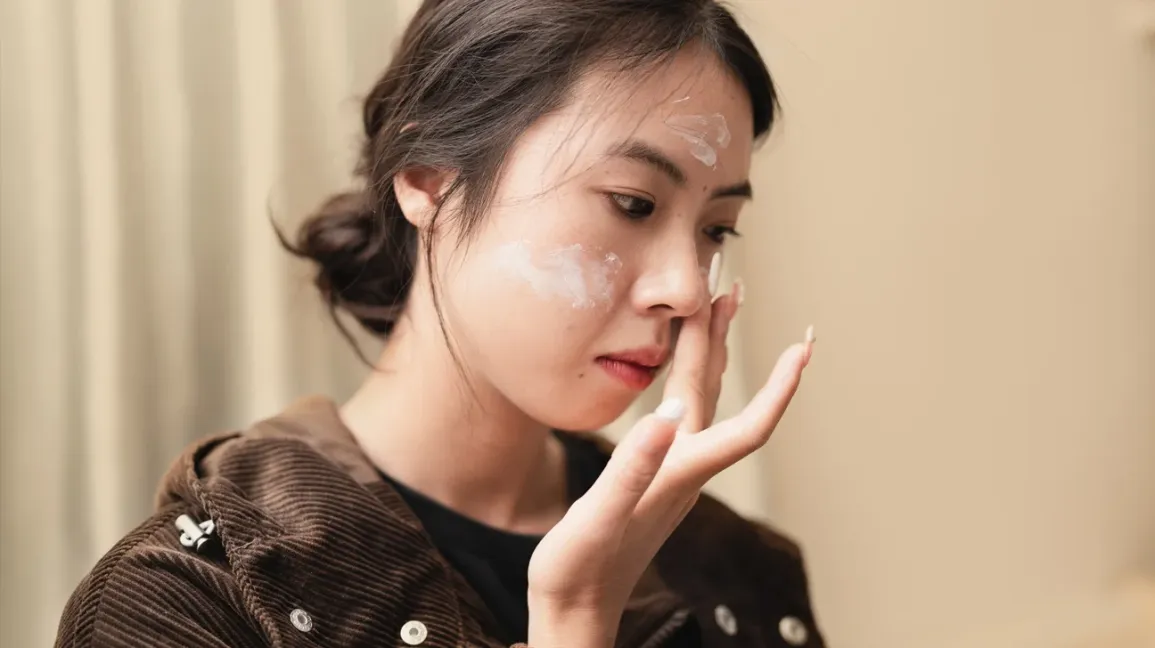
For years, people have debated whether spending time in the sun can improve acne or worsen it. While some swear by a golden tan to help dry up Harming Pimples, others argue that the sun can make breakouts worse. To uncover the truth, it’s essential to explore how UV exposure impacts the skin, particularly in acne-prone areas. Let’s delve into the details and discover whether that sunny glow is a friend or foe in the fight against pimples.
Understanding Acne and Its Causes
Acne is a common skin condition, primarily caused by a buildup of oil, bacteria, and dead skin cells within hair follicles. It occurs in several forms, including blackheads, whiteheads, cysts, and pimples, each resulting from different combinations of clogged pores and bacteria. The main triggers for acne include hormonal fluctuations, excess oil production, and the overgrowth of skin cells.
Sebum, an oily substance produced by sebaceous glands, plays a central role in acne development. While it’s essential for maintaining skin moisture, excessive sebum can clog pores and create a breeding ground for bacteria, leading to inflammation and pimples. Genetics, lifestyle, diet, and environmental factors like sun exposure can all impact the frequency and severity of breakouts.
Sun Exposure: What Does It Do to the Skin?

Exposure is a double-edged sun and skin sword. UV rays on the skin do penetrate different layers and can result in cellular reactions After all, the sun will create an artificial drying sensation right away — which will make pimples seem better and feel smaller! But the long-term consequences of UV radiation go well beneath the skin deep — degrading collagen, damaging DNA, and triggering inflammation in all animal’s largest organ levels.
Excessive sun exposure can break down the skin’s natural protective barrier, leaving it open to bacteria and pollutants. The result is premature aging, more oil production, and even sensitive skin, which can trigger acne or worsen it if you have a genetically predisposed condition.
The Link Between Sun Exposure and Acne
It’s common to feel that the sun dries out Harmingand reduces redness initially. However, this effect is often temporary, masking the long-term consequences. UV rays cause the skin to produce more oil as a way of compensating for the moisture loss. This increase in oil production can clog pores and foster an environment for acne development.
Additionally, as the sun dries out the skin, it triggers a compensatory response in which the skin works to replenish its moisture levels. This can result in even more oil production than before, creating a cycle where UV exposure leads to both immediate and prolonged acne triggers. Thus, while sun exposure may initially mask acne symptoms, it often exacerbates them over time.
Can Sun Exposure Help Pimples Heal?
There is a widespread belief that spending time in the sun can help pimples heal faster due to the drying effect of UV rays. While it’s true that sun exposure can temporarily dry out the skin and reduce surface oil, this does not address the root causes of acne. Harming Pimples are often a result of clogged pores and bacteria, neither of which can be eliminated by UV exposure alone.
Furthermore, the drying effect can be deceiving. When the skin is deprived of moisture, it responds by producing more oil to protect against dryness. This rebound oil production can ultimately worsen acne conditions, leading to more harmful pimples in the days following sun exposure.
The Hidden Dangers of Sun Exposure for Acne-Prone Skin
Though it may initially feel like the sun is helping, prolonged exposure brings hidden risks, especially for those with acne-prone skin. One key danger is inflammation: UV rays cause microscopic damage to skin cells, which can make already sensitive, acne-prone skin even more vulnerable. This inflammation not only irritates existing harming pimples but can lead to a worsening cycle of redness, sensitivity, and new breakouts.
Sunburn, too, is a significant risk factor. When the skin gets sunburned, it becomes more susceptible to peeling and irritation, which can disrupt healing processes and expose delicate new skin to bacteria. This can increase the likelihood of new Harming pimples forming, particularly as the skin works to recover from UV-induced damage.
How Sun Exposure Can Worsen Acne
One of the most overlooked effects of UV exposure is its ability to stimulate sebum production. This increased oil, combined with dead skin cells and other debris, can clog pores and form a perfect environment for acne bacteria. Sun exposure can also cause hyperpigmentation, especially in acne-prone skin. This means that Harming Pimples and scars may become darker and more noticeable after being in the sun, leading to persistent and hard-to-treat discoloration.
In the long term, UV exposure breaks down collagen, which is essential for skin elasticity and smoothness. Acne scars may become more prominent due to collagen degradation, making them appear deeper and harder to fade.
The Role of Sunscreen in Acne Prevention

For acne-prone skin, sunscreen is non-negotiable. Daily SPF application shields the skin from harmful UV rays, preventing the aggravation of acne. However, selecting the right sunscreen is crucial, as certain formulations can clog pores or irritate sensitive skin. Look for non-comedogenic and oil-free sunscreens specifically designed for acne-prone skin to avoid breakouts while staying protected.
Physical sunscreens, which contain zinc oxide or titanium dioxide, are often well-suited for sensitive skin as they sit on the skin’s surface without irritating. Chemical sunscreens, while effective, may sometimes aggravate acne-prone skin, so a patch test is always recommended.
Can UV Exposure Cause Acne Scarring?
Unfortunately, the sun can make acne scars appear worse. Prolonged UV exposure can darken post-inflammatory hyperpigmentation, the dark spots left behind after a pimple heals. This can make acne scars appear more prominent and take longer to fade. Additionally, the breakdown of collagen from sun exposure means that skin loses some of its firmness, which can make scars look deeper and more pronounced over time.
Using sun protection helps protect the skin’s healing processes, allowing scars to fade more naturally without the risk of becoming darker or more visible due to UV exposure.
How Sun Exposure Alters Skin Texture Over Time
Sun exposure can change skin texture, often making it appear rougher or more uneven. This effect results from UV damage to collagen and elastin, two proteins that keep skin smooth and supple. For acne-prone individuals, this can mean that areas with previous breakouts are more susceptible to a loss of elasticity, which contributes to rough texture and the appearance of scars.
Moreover, the surface layer of the skin can become thicker due to consistent sun exposure, as the body tries to protect itself from UV damage. This can trap oil and dead skin cells, leading to further acne and complicating the skin’s ability to recover smoothly from previous Harming Pimples.
Summer vs. Winter Sun Exposure on Acne
In the summer, sun intensity is typically higher, which means that UV exposure can have a greater impact on acne-prone skin. Warmer temperatures also increase sweat production, which can combine with oils on the skin to clog pores more easily. By contrast, in winter, the sun’s intensity is often lower, but skin can still suffer from UV damage if left unprotected.
Seasonal changes mean adjusting skincare routines accordingly. In the summer, use lightweight sunscreens and frequent cleansing to manage oil and sweat. In winter, choose hydrating, non-comedogenic products to maintain moisture without aggravating acne.
Common Myths about Sun Exposure and Harming Pimples
One popular myth is that tanning clears up acne by drying out the skin. While tanning can provide a temporary improvement in skin tone, it doesn’t address acne’s root causes and often leads to worse breakouts once the tan fades. Another common belief is that darker skin is naturally protected from acne; however, people with darker skin tones can also suffer from UV-induced pigmentation and acne.
It’s essential to rely on scientifically backed skincare practices instead of myths to manage acne effectively. Tanning, in reality, may give a quick improvement in appearance but often leaves long-term skin damage.
Scientific Studies on Sun and Acne Relationship
Although studies suggest that sunlight can make acne appear less any SPF 15 and gives at least moderate protection against ultraviolet A radiation (UVA) and ult( but sunshine is linked to early bes t1Oácne-related cancer, so protect your face. Studies showcase the skin barrier and oil production disruption that occurs via UV exposure, as well as its role in worsening post-inflammatory pigmentation. Most dermatologists warn that sunlight will not solve the problem, and they think long-term effects could be bad for the skin.
Balancing Sun Exposure for Skin Health
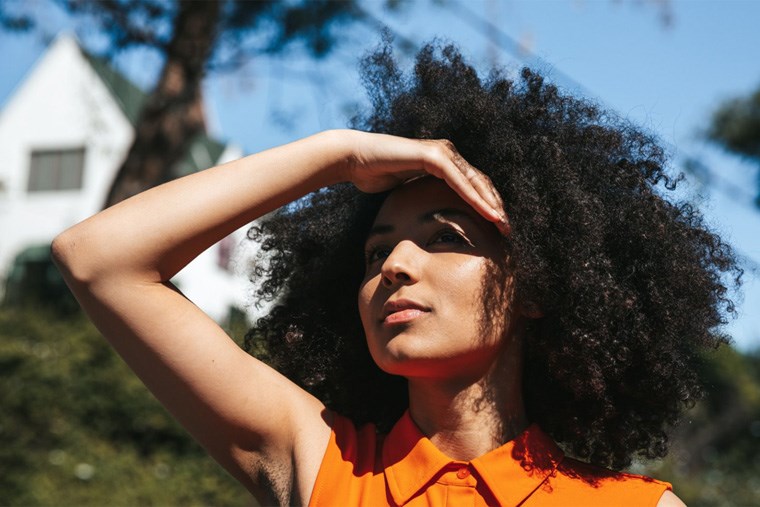
Healthy sun exposure can be achieved by spending short amounts of time outdoors, particularly during non-peak hours. For those with acne-prone skin, wearing protective clothing, applying sunscreen, and avoiding direct sunlight during peak hours can help maintain skin health while still enjoying some outdoor time.
Conclusion
While sun exposure might offer a brief improvement in acne’s appearance, the long-term risks often outweigh the benefits. From increased oil production to higher risks of scarring and pigmentation, prolonged UV exposure generally harms acne-prone skin. Protecting your skin with sunscreen and choosing sun-safe practices can help maintain a clear complexion and minimize the risk of long-lasting skin damage.
FAQs
Is sun exposure ever recommended for acne?
Sun exposure is generally not recommended for acne as it can lead to increased oil production and hyperpigmentation, which can worsen breakouts.
Can sunscreen clog pores and make acne worse?
Some sunscreens can clog pores, but choosing non-comedogenic and oil-free formulas helps prevent this.
How can I protect my skin without causing breakouts?
Opt for a lightweight, non-comedogenic sunscreen and cleanse your skin twice daily to keep pores clear.
Is sunburn worse for acne-prone skin?
Yes, sunburn can increase irritation and inflammation, leading to more pronounced acne symptoms.
Can I use other UV treatments for acne?
Certain UV treatments, like blue light therapy, can help in controlled settings, but natural sun exposure is not effective for acne management.
Skin
Is Chocolate Really Causing Your Pimples?
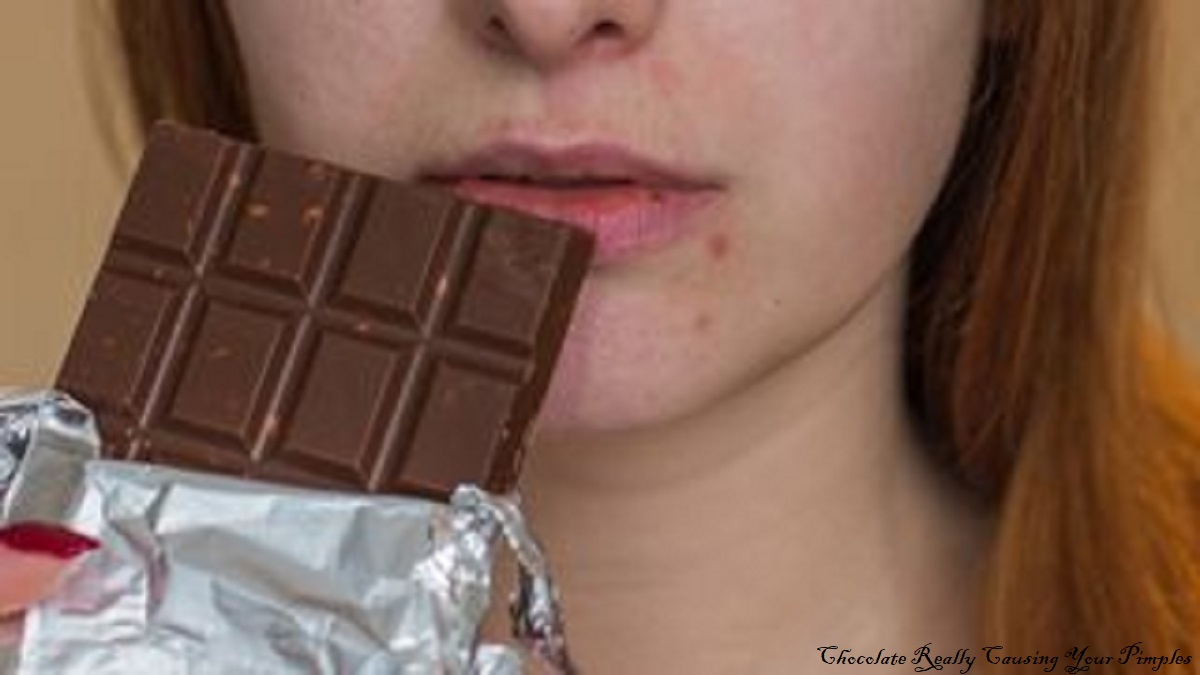
Chocolate Really Causing Your Pimples: Pimples are a common skin problem that affects both children and adults, and it is often caused by a combination of genetics, hormone swings, and eating habits. One of the most common misconceptions about Pimples is that eating chocolate makes things worse. But is this notion truly valid? Is chocolate truly to blame for breakouts?
This article digs into the scientific data supporting this claim and looks at how chocolate and nutrition affect skin health.
Understanding Pimples Causes
It is crucial to understand the main causes of acne before determining whether chocolate causes it. Acne arises when the skin generates too much sebum, or oil, which clogs pores. Skin bacteria can contribute to the development of pimples and inflammation.
Among the main causes of acne are the following:
. Hormonal Fluctuations: Changes in hormone levels, especially during menstruation or adolescence, can increase the production of oil on the skin.
. Genetics: A person’s susceptibility to acne is greatly influenced by their genetic composition.
. Stress and Psychological Pressure: High levels of stress can raise hormones that activate oil glands, increasing the likelihood of acne.
. Diet: This raises the question of whether certain foods, such as chocolate, can exacerbate acne.

Does Chocolate Trigger Pimples? Scientific Findings
Evaluating chocolate’s effect on acne has piqued the curiosity of the scientific community. Some research has tried to establish a direct connection between eating chocolate and developing flaws.
. Contradictory Research: Despite its widespread use, scientists do not all agree that chocolate causes acne. According to some research, eating chocolate may make acne worse in some people, while other studies find no conclusive proof of this.
. Chocolate Type: According to some research, black chocolate might not have the negative consequences of milk or sugar-filled chocolate. Dark chocolate usually has less sugar and dairy and a higher amount of cocoa.
. Sugars and Fats: Because sugar raises insulin levels, which can cause the skin to produce more oil, some experts hypothesize that high-sugar chocolates may indirectly cause acne. This suggests that the problem might be with the additional sugars and fats rather than the chocolate itself.
. Individual Skin Reactions: certain people may be more sensitive to certain foods than others, so for certain people only, chocolate may exacerbate or intensify acne.
Hormones and Chocolate’s Influence
Insulin is one of the hormones implicated in the known relationship between hormone levels and acne formation. Insulin levels in the body are raised when sugar and refined carbohydrates, which are frequently found in large quantities in some varieties of chocolate, are consumed. The skin may produce more oil as insulin levels rise. Therefore, it is thought that foods high in sugar, such as sugary chocolates, may indirectly affect acne by increasing insulin levels.

Differences Between Dark and Milk Chocolate
The type of chocolate consumed has a significant impact on how it affects acne. There are various ways that dark chocolate is different from milk chocolate.
. Dark chocolate: Often has less sugar and a higher cocoa content than sweetened chocolate, which means it has less of an effect on insulin levels.
. For certain people: Milk chocolate may make acne more likely because it has a lot more sugar and milk.
According to studies, dark chocolate may be a better choice in terms of its effects on the skin because it has fewer chemicals that can cause inflammation or increase blood sugar.
Guidelines to Mitigate Chocolate’s Impact on Skin
If you’re a chocolate enthusiast yet worry about acne, consider these tips to enjoy chocolate without compromising your skin:

. Choose Dark Chocolate: Steer clear of high-sugar chocolates and choose those with at least 70% cocoa.
. Moderate Consumption: Avoid overindulging and enjoy chocolate in moderation.
Examine How Chocolate Affects Your Skin: You can determine how chocolate affects your skin by keeping an eye out for any changes that occur after eating it.
. Keep a Balanced Diet: Eating foods high in nutrients and avoiding bad fats and sweets will improve skin health in general, so don’t just blame chocolate.
Conclusion: Should You Avoid Chocolate Altogether?
Since different people react differently to different foods, it is not feasible to categorize chocolate as the only or main cause of acne. If you like chocolate but think it might be bad for your skin, cut back and see what happens. Otherwise, complete abstinence is not required.
After all, a variety of variables influence skin health, and the best strategy to keep skin looking its best may be to eat a balanced diet full of fruits, vegetables, and complete grains.
-

 Hair8 months ago
Hair8 months agoDoes a Flat Iron Kill Lice? Fact or Myth?
-

 Skin8 months ago
Skin8 months agoNatural Oil-Free Face Moisturizer Reviews & Buyers Guide
-

 Hair3 days ago
Hair3 days agoDoes a Flat Iron Kill Lice? Fact or Myth?
-

 Hair8 months ago
Hair8 months agoFunction of Beauty: Personalized Hair Care for Your Unique Needs
-

 Skin7 months ago
Skin7 months agoAbout Face Beauty: Tips for Enhancing Your Natural Beauty
-

 Hair8 months ago
Hair8 months agoTitanium Flat Iron vs. Ceramic
-

 Skin7 months ago
Skin7 months agoBeautiful Nails: Tips and Tricks for Healthy and Gorgeous Nails
-

 DIY Cosmetics8 months ago
DIY Cosmetics8 months agoEmpire Beauty School:

